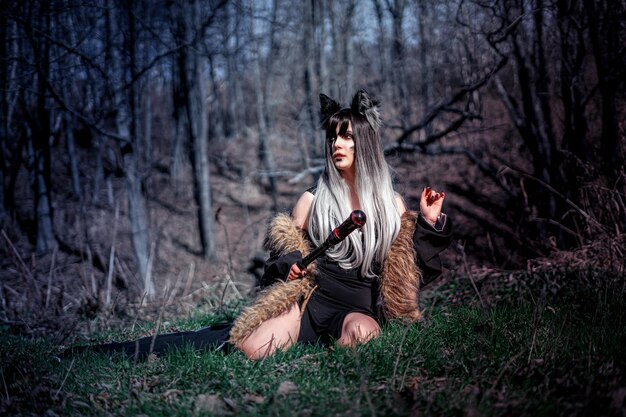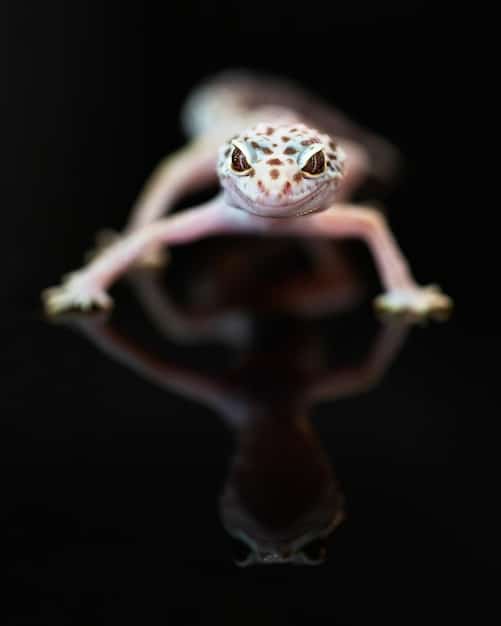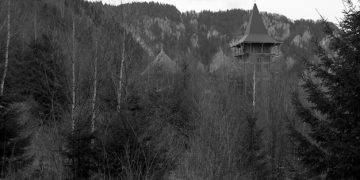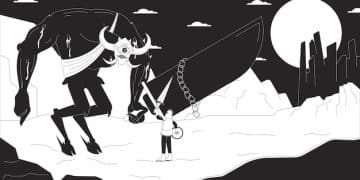The Witcher Schools: A Netflix Guide to Witchers

Netflix’s ‘The Witcher’ introduces viewers to a world populated by monster hunters known as Witchers, each trained by different schools with unique philosophies, combat styles, and mutations; this guide explores the diverse Witcher schools and their distinct traits.
Netflix’s adaptation of ‘The Witcher’ has brought the fascinating world of monster hunters to a broader audience. Central to this world are the Witchers themselves, elite warriors trained from childhood to combat terrifying creatures. But not all Witchers are the same; they hail from different schools, each with its own history, training methods, and code.
A Brief Overview of Witchers
Before diving into the specifics of each school, it’s essential to understand what a Witcher is. Witchers are monster hunters, individuals subjected to rigorous training and mutagenic processes that grant them enhanced abilities, such as heightened senses, increased strength, and extended lifespans. They are often feared and misunderstood, walking a lonely path between humans and monsters.
The Witcher’s Training
The journey of a Witcher begins in childhood. Selected children, often orphans, are taken to Witcher strongholds to undergo brutal training regimes. This training includes swordsmanship, alchemy, monster lore, and the use of magical signs. The most crucial and dangerous part of their transformation is the Trial of the Grasses, a mutagenic process that only a few survive.
The Witcher’s Code?
Despite their training, Witchers are not simply emotionless killers. Many follow a code of neutrality, taking contracts based on need and avoiding political entanglements. However, this code is often tested, as Witchers face moral dilemmas and prejudice from the world around them. The series explores these complexities, showcasing the humanity (or lack thereof) in these monster hunters.

- Enhanced Senses: Allowing them to track monsters and perceive details others miss.
- Prolonged Lifespan: Witchers live significantly longer than ordinary humans.
- Magical Abilities: Manifested through the use of signs, simple but effective spells.
In summary, Witchers are more than just monster slayers. They are products of rigorous training and dangerous mutations, bound by their own codes and facing constant prejudice. Understanding their origins is key to appreciating the nuances of the different Witcher schools.
The School of the Wolf
The School of the Wolf, based at Kaer Morhen, is perhaps the most well-known Witcher school, largely due to its association with Geralt of Rivia, the protagonist of the series. This school emphasizes a balanced approach to combat and a strong sense of camaraderie among its members.
Kaer Morhen: The Keep of the Wolf
Kaer Morhen, located in the remote Blue Mountains, served as the primary training ground for Witchers of the Wolf School. Over time, it fell into disrepair, eventually becoming a haven for the few remaining Wolf Witchers. The keep witnessed countless battles, training exercises, and the rise and fall of legendary Witchers.
Wolf School’s Philosophy
The School of the Wolf is known for its pragmatic and adaptable approach to monster hunting. They prioritize efficiency and resourcefulness, teaching their Witchers to utilize a combination of swordsmanship, alchemy, and signs to overcome their enemies. Unlike some other schools, the Wolf School encourages a sense of brotherhood among its members, fostering loyalty and mutual support.
- Balanced Combat: Skilled in both swordsmanship and the use of signs.
- Strong Brotherhood: Emphasizes loyalty and mutual support among members.
- Pragmatic Approach: Focuses on efficiency and resourcefulness in monster hunting.
In conclusion, the School of the Wolf represents a balanced and pragmatic approach to the Witcher lifestyle, fostering a strong sense of community among its members, even as their numbers dwindle.
The School of the Viper
The School of the Viper, with its rumored origins in the Nilfgaardian Empire, diverges sharply from the Wolf School’s honorable reputation. Known for their cunning, poison-based tactics, and political entanglements, Viper Witchers often operate in morally grey areas.
Poison and Intrigue
Viper Witchers are masters of alchemy, specializing in the use of poisons and toxins to enhance their combat abilities. They are also skilled in espionage and infiltration, often hired by nobles and rulers for clandestine missions. This has earned them a reputation as untrustworthy and opportunistic.
Letho of Gulet
One of the most notorious Viper Witchers is Letho of Gulet, a powerful and enigmatic figure who plays a significant role in the Witcher video games. Letho’s actions, including the assassination of several kings, have cemented the Viper School’s association with political intrigue and moral ambiguity.

- Alchemy Masters: Experts in using poisons and toxins in combat.
- Espionage Skills: Skilled in infiltration and gathering intelligence.
- Political Involvement: Often hired for clandestine missions and political assassinations.
In summary, the School of the Viper, known for its mastery of poisons and involvement in political intrigue, presents a darker side of the Witcher profession, shrouded in secrecy and moral ambiguity.
The School of the Cat
The School of the Cat is shrouded in mystery and infamy. Unlike other schools, the Cat School experimented heavily with mutations, often resulting in unstable and unpredictable Witchers. They are also known for their nomadic lifestyle and association with assassins.
Unstable Mutations
The Cat School’s pursuit of creating the ultimate monster hunter led them to experiment with advanced and often dangerous mutagenic processes. These experiments resulted in Witchers with enhanced agility and speed but also increased instability and psychological issues. This made them unpredictable and prone to violence.
Nomadic Lifestyle
Unlike the other schools that maintained strongholds, the Cat School adopted a nomadic lifestyle, traveling from town to town and offering their services to the highest bidder. This lack of a fixed base and their association with unstable Witchers further damaged their reputation.
- Advanced Mutations: Experimented with unstable mutagenic processes.
- Nomadic Lifestyle: Traveled from place to place, lacking a fixed base.
- Assassin Reputation: Often associated with assassins and mercenaries.
In conclusion, the School of the Cat stands apart due to its unstable mutations, nomadic existence, and infamous association with assassins, contributing to its mysterious and often negative reputation within the Witcher world.
The School of the Bear
The School of the Bear emphasizes strength and resilience, producing Witchers who are formidable in combat and highly resistant to injury. They are known for their heavy armor and unwavering determination.
Emphasis on Strength
Bear Witchers prioritize brute strength and endurance, often engaging in direct confrontations with monsters. Their training focuses on developing physical prowess and the ability to withstand significant amounts of damage. This makes them well-suited for battling large and powerful creatures.
Heavy Armor
Unlike other Witcher schools that favor agility and finesse, the Bear School equips its members with heavy armor, providing them with superior protection in combat. This allows them to absorb blows that would cripple other Witchers, making them incredibly resilient opponents.
- Brute Strength: Prioritizes physical power and endurance in combat.
- Heavy Armor: Equips Witchers with superior protection.
- Resilient Fighters: Known for their ability to withstand significant damage.
In summary, the School of the Bear focuses on strength and resilience, producing Witchers who are well-equipped to withstand brutal battles, thanks to their heavy armor and unwavering determination.
Other Notable Witcher Schools
While the School of the Wolf, Viper, Cat, and Bear are the most prominent, other Witcher schools exist within the lore, each with its own unique characteristics and contributions to the Witcher world.
The School of the Griffin
The School of the Griffin values honor and chivalry, producing Witchers who adhere to a strict code of conduct. They are known for their expertise in both swordplay and magical signs, making them well-rounded monster hunters.
The School of the Crane
Very little is known about the School of the Crane. Their methods and history remain largely a mystery. They are mentioned briefly in the books, hinting at unique skills or practices, but specifics are scarce.
- Griffin School: Values honor and chivalry, emphasizing a code of conduct.
- Crane School: Enshrouded in mystery, with little known about its methods.
In conclusion, while the primary Witcher schools receive the most attention, the existence of others, such as the Griffin and Crane schools, enriches the Witcher world by adding greater depth and diversity to its martial traditions.
| Key Point | Brief Description |
|---|---|
| 🐺 Wolf School | Known for balanced combat and strong camaraderie. |
| 🐍 Viper School | Masters of poison and political intrigue. |
| 🐻 Bear School | Emphasizes strength and heavy armor. |
| 🐱 Cat School | Known for unstable mutations and nomadic lifestyle. |
FAQ
▼
Witchers are monster hunters who undergo rigorous training and mutagenic processes to gain enhanced abilities. They are often feared and misunderstood, existing on the fringes of society.
▼
Kaer Morhen is the ancient keep of the School of the Wolf, nestled in the remote and treacherous Blue Mountains, far from civilization.
▼
The Viper School stands out due to its mastery of poisons and toxins, often engaging in espionage and political assassinations, setting them apart from other schools.
▼
The Trial of the Grasses is a dangerous mutagenic process that Witcher initiates undergo to gain their enhanced abilities. Many do not survive the trial.
▼
The Witcher’s code is a set of principles dictating neutrality in monster hunting, often tested by moral and political dilemmas faced by Witchers in a world full of prejudice.
Conclusion
Exploring the different Witcher schools reveals the rich tapestry of moralities, combat styles, and histories that define the world of ‘The Witcher.’ From the honorable School of the Wolf to the enigmatic School of the Crane, each Witcher embodies a unique approach to monster hunting, contributing to the complexity and depth of this beloved fantasy universe.





